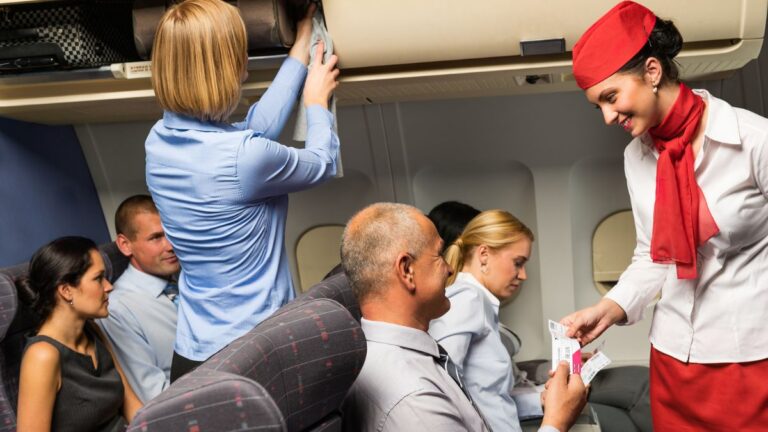Cash or Card: Navigating Currency in Austria

As participants in Amazon Associates and other programs, we earn from qualifying purchases. This comes at no additional cost to you. For more details, see our Affiliate Disclosure.
When you’re traveling in Austria, one of the first things you’ll notice is the country’s unique approach to currency. It’s a place where the old world charm of cash transactions often meets the modern convenience of card payments. This article will take you on a journey through the Austrian monetary landscape, offering insights and tips on when to use cash and when to reach for your card. Our goal is to help you navigate this aspect of Austrian culture with ease, so you can focus on enjoying your travel experience.
HIGHLIGHTS
- Austria has a deep-rooted preference for cash, particularly in smaller towns and rural regions. However, urban areas see a wider acceptance of credit and debit card payments.
- Digital wallets and contactless payments, such as Apple Pay and contactless cards, are gaining traction in Austria, especially in urban centers and among the younger demographic.
- Travelers should be cautious of potential pitfalls like foreign transaction fees, dynamic currency conversion, and card incompatibility while navigating the Austrian financial landscape.
The Legacy of Cash: Austria’s Affection for Hard Currency
In Austria, cash has an enduring legacy that stretches back centuries. Historically, hard currency served as a tangible representation of wealth and stability. Austrians, known for their prudence and fiscal responsibility, often preferred the tactile assurance of coins and notes over abstract numbers in bank accounts.
The country’s markets, from bustling urban centers to serene alpine villages, have long witnessed transactions made with meticulously counted euros, a testament to the nation’s trust in physical money.
However, this affection for cash isn’t merely a relic of the past. Even today, many local establishments in Austria lean towards cash transactions, cherishing the immediacy and transparency it offers.
This preference stands in contrast to some of its European neighbors, who have rapidly transitioned to digital transactions. In Austria, while electronic payments are gaining ground, the rhythmic dance of coins against wooden counters remains a familiar sound, echoing both tradition and trust.
Credit and Debit: How Widely are Cards Accepted?
As the world shifts towards a more digitalized financial landscape, Austria too has not remained untouched by the allure of plastic money. Over the years, credit and debit cards have carved out their space in the Austrian economy, facilitated by global tourism and the convenience they offer.
In urban areas such as Vienna, Salzburg, and Graz, most hotels, restaurants, and larger stores readily accept major credit and debit cards. The presence of international chains and upscale boutiques in these cities further ensures that card transactions are smooth and commonplace. Similarly, most online retailers catering to the Austrian market provide options for card payments.
However, as one ventures into smaller towns or rural regions, the reliance on cash becomes more pronounced. Many local cafes, guesthouses, and mom-and-pop shops in these areas might not have card payment facilities. It’s not unusual for smaller establishments to sport a “Cash Only” sign, reminding visitors of the country’s enduring affection for hard currency.
Additionally, while debit card transactions are generally straightforward, credit card users might occasionally encounter establishments that either charge a small fee or have a minimum spend requirement.
It’s always wise for travelers to keep a mix of both cash and card on hand, ensuring they’re prepared for any situation, whether sipping coffee in a rustic alpine cafe or shopping at a trendy boutique in the heart of Vienna.
ATMs and Banking: Accessing Your Money on the Go
While the age-old charm of Austria might transport visitors back in time, the country’s modern banking infrastructure ensures they’re never too far from their financial essentials. Automated Teller Machines (ATMs), or “Bankomats” as they’re locally known, are generously sprinkled across the country, providing easy access to cash whenever needed.
Urban Access: In the bustling cities, ATMs are ubiquitous. Whether it’s a street corner in Vienna or a shopping mall in Linz, you’re likely to spot a Bankomat. These machines typically offer language options, ensuring that international travelers can navigate the interface with ease.
Rural Reach: Even in smaller towns and some rural areas, ATMs aren’t hard to find. They’re commonly located outside bank branches or in central locations like market squares. However, if you’re planning an extended stay in a secluded area or going on a countryside adventure, it’s advisable to withdraw sufficient cash in advance.
Banking Hours: Traditional Austrian banks usually operate from Monday to Friday, with opening hours typically from 8 am to 12:30 pm and then from 1:30 pm to 3 pm or 4 pm, though this can vary. It’s worth noting that most banks are closed on weekends.
Fees and Limits: While ATMs are readily accessible, travelers should be mindful of transaction fees, especially when using a foreign card. Some ATMs charge a fee for withdrawals, and your home bank might also levy a charge for international transactions. It’s a good practice to check with your bank about overseas withdrawal charges. Additionally, ATMs often have a daily withdrawal limit, so plan your cash needs accordingly.
Safety First: As with anywhere in the world, it’s prudent to be cautious when withdrawing money. Use ATMs in well-lit, secure areas, and always shield your PIN.
By familiarizing yourself with Austria’s banking landscape and being prepared, you can ensure that accessing your money is a seamless aspect of your Austrian sojourn, letting you focus on the country’s myriad attractions.
Tips and Tidbits: Etiquette on Tipping and Small Purchases
In Austria, as in many places worldwide, there are certain unwritten rules and customary practices related to money, particularly when it comes to tipping and making small purchases. Understanding these nuances can ensure smooth interactions and a more immersive experience in this beautiful country.
Tipping in Austria
Restaurants and Cafes: It’s customary to round up the bill or tip about 5-10% in Austrian restaurants and cafes. Unlike some countries where leaving the tip on the table is standard, in Austria, you typically tell the server the total amount you wish to pay, including the tip, when handing over your money.
Taxis: For taxi drivers, rounding up to the nearest euro or adding an extra 5% is generally appreciated.
Hairdressers and Spa Services: It’s polite to leave a small tip, usually around 5%, for these services.
Hotels: A small tip for the bellboy or housekeeping is considered polite, although not mandatory.
Tipping in Coins: It’s perfectly acceptable to tip in coins, especially if it’s a smaller amount.
Small Purchases and Cash Transactions
Cash is King: For smaller purchases like a coffee, a pastry, or trinkets from local markets, cash is often preferred, and in some cases, the only accepted method of payment.
Carry Small Change: It’s a good practice to keep a stash of coins and smaller bills. Not only is it handy for small purchases, but it’s also useful for public restrooms that require a fee.
Price Rounding: In some small shops or stalls, especially in rural areas, if you’re short a few cents, the seller might round off the price. This isn’t a widespread practice, but it’s a nod to the community spirit and trust that’s intrinsic to Austrian culture.
Receipts: Even for small purchases, you’ll often receive a receipt. It’s a standard practice in Austria, ensuring transparency in transactions.
By observing these tips and tidbits related to money etiquette in Austria, visitors can navigate their monetary interactions confidently, ensuring they resonate with the local customs and practices.
Whether it’s leaving a tip at a Viennese cafe or buying handcrafted souvenirs in a Tyrolean village, understanding these nuances enhances the travel experience manifold.
The Rise of Digital Wallets and Contactless Payments
As technology continues its rapid advance, Austria, much like the rest of the world, is witnessing a significant shift in its payment ecosystem. The rise of digital wallets and contactless payments is revolutionizing how transactions are conducted, blending the country’s rich traditions with the convenience of modern innovation.
Digital Wallets Take Center Stage
Once a niche concept, digital wallets like Apple Pay, Google Wallet, and local variants have found increasing acceptance in Austria. These platforms allow users to store their payment information securely on their devices, facilitating swift and contactless transactions.
Especially among the younger demographic, the adoption rate of these wallets is on the rise, driven by the convenience and security they offer.
Contactless Cards Gain Momentum
While digital wallets represent the cutting edge, contactless cards have become almost ubiquitous in Austria. Many local banks now issue contactless-enabled cards as standard. With just a tap, purchases below a certain limit can be made without entering a PIN, making it a favored choice for quick and hassle-free transactions.
Where Are They Accepted?
From upscale restaurants in Vienna to convenience stores in Innsbruck, the acceptance of digital wallet and contactless payments is expanding. Public transport networks, vending machines, and even some traditional markets have begun integrating contactless payment terminals.
However, as with card payments, it’s always advisable for travelers to carry some cash, especially when venturing into more rural or secluded areas.
Safety and Security
One of the primary driving factors behind the rise of digital wallets and contactless payments is the level of security they provide.
Encrypted transactions, biometric authentications, and the ability to remotely lock or erase a lost device add layers of protection that traditional payment methods might lack.
Cultural Adaptation and Outlook
While technology is pushing the boundaries of payment methods, it’s essential to recognize the cultural balance Austria maintains. The country’s affection for cash persists, even as younger generations lean into digital methods.
This duality creates a unique blend, reflecting Austria’s position at the crossroads of tradition and innovation.
As digital wallets and contactless payments become increasingly integral to the Austrian financial landscape, they offer both residents and travelers a blend of convenience and security. Yet, in the heart of this technological evolution, the essence of Austria’s cultural and fiscal roots remains ever-present.
Potential Pitfalls: Common Issues and How to Avoid Them
While Austria’s payment ecosystem is evolving with the global trend towards digitalization, certain pitfalls can disrupt a seamless experience for residents and travelers alike. Being forewarned about these potential hiccups can save time, money, and unwanted stress.
1. Foreign Transaction Fees:
- Issue: Many credit and debit cards from non-European banks might charge a foreign transaction fee for every purchase made in Austria.
- Solution: Check with your bank before traveling. Consider getting a card that doesn’t charge foreign transaction fees or, alternatively, use cash for most of your expenses.
2. Dynamic Currency Conversion (DCC):
- Issue: Some merchants might offer to convert your card transaction into your home currency at the point of sale. This can often result in unfavorable exchange rates and additional fees.
- Solution: Always choose to be billed in the local currency (euros) rather than your home currency.
3. Unrecognized Transactions:
- Issue: When using unfamiliar ATMs or POS terminals, there’s a risk of unauthorized or incorrect transactions.
- Solution: Regularly monitor your bank statements. Opt for ATMs affiliated with well-known banks, and keep all payment receipts until you’ve verified the charges.
4. Card Incompatibility:
- Issue: Some older magnetic stripe-only cards from outside Europe might not work in Austrian ATMs or card machines that require chip-and-PIN verification.
- Solution: Before traveling, ensure your card has a chip and familiarize yourself with its PIN. If in doubt, inform your bank about your travel plans and ask about card compatibility.
5. Limited Cash in Remote Areas:
- Issue: In some remote or rural areas, ATMs might be sparse, and card acceptance could be limited.
- Solution: Always carry a reasonable amount of cash when traveling away from urban centers. Plan ahead by checking the availability of ATMs on your route.
6. Lost or Stolen Cards:
- Issue: Losing a card or having it stolen is a potential risk, especially in tourist-heavy areas.
- Solution: Always keep your cards in a secure and concealed place. Make a note of your bank’s international helpline so you can report and block the card immediately if needed.
7. Outdated Contact Information:
- Issue: Your bank might detect unusual activity and try to contact you for verification, resulting in blocked transactions if they can’t reach you.
- Solution: Ensure your bank has your updated contact details, including an international number if you’re traveling.
Awareness of these pitfalls and their solutions can ensure a smoother financial experience in Austria. With a mix of vigilance and preparation, one can navigate the monetary landscape of this beautiful country with ease and confidence.






